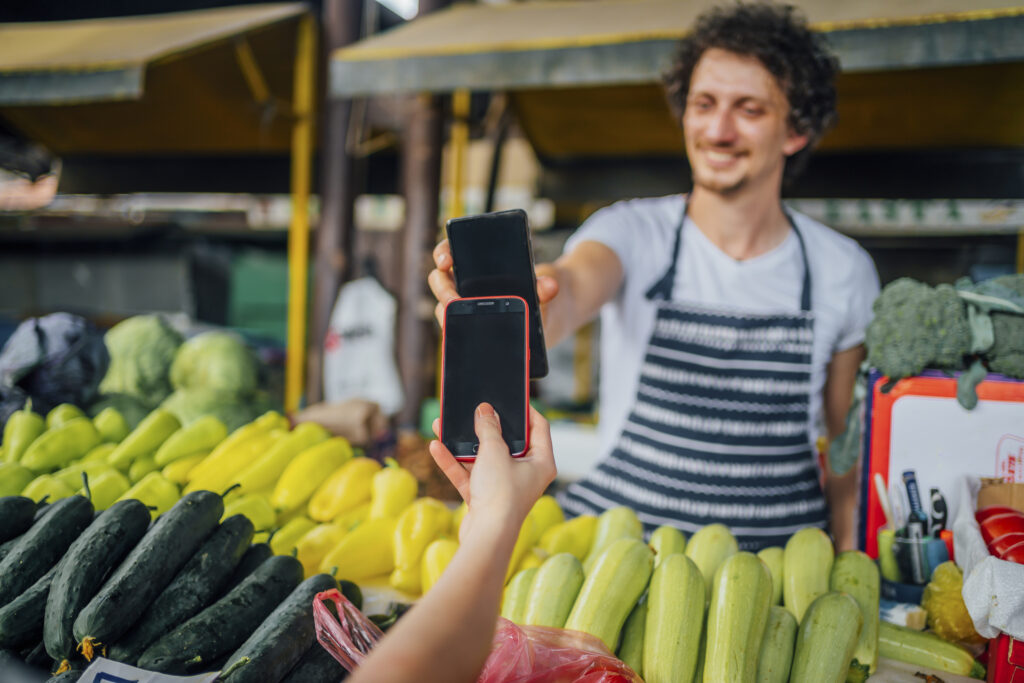How to take payments as a small business

Customer paying with mobile phone at public market
For small businesses, how you take payments can be an important aspect of your sales success. Here, the experts at tapeeno outline some of the ways to take payments and the various pros and cons for each.
Cash
In the past, cash has been king when it comes to taking payments for small businesses. While this is a simple and effective way to take payments from customers, managing change, keeping cash safe and depositing monies can make this a cumbersome and insecure way to receive payments.
Mobile payments
Mobile payment apps, like Google Pay, are extremely popular. They allow anyone to accept payments by downloading the app and linking it to your bank account details. However, you can only receive payments if the customer also has the same app loaded to their device. Payments can also take time to appear in your account, so this can be a slower option than other forms of electronic payments.
Card machines
Using a card payment machine allows you to offer customers the convenience to pay without cash and can help to increase sales for your business. However, the hardware required along with the associated fees can be expensive and difficult to transport. Funding delays can also mean your account isn’t credited for up to four days after the transaction takes place.
An app that turns your phone into a payment machine
A quicker and faster alternative to a traditional POS (Point of Sale) card machine is tapeeno. This ground-breaking app which turns your phone into a card reader is the first to offer faster processing technology. This means, not only does it operate without the requirement of any additional hardware, but funds are credited to your account within one hour, making it ideal for managing cashflow. Additionally, there are no hidden costs – just a 1.50% fee per transaction processed – making it a much more affordable alternative for small businesses and start-ups.




